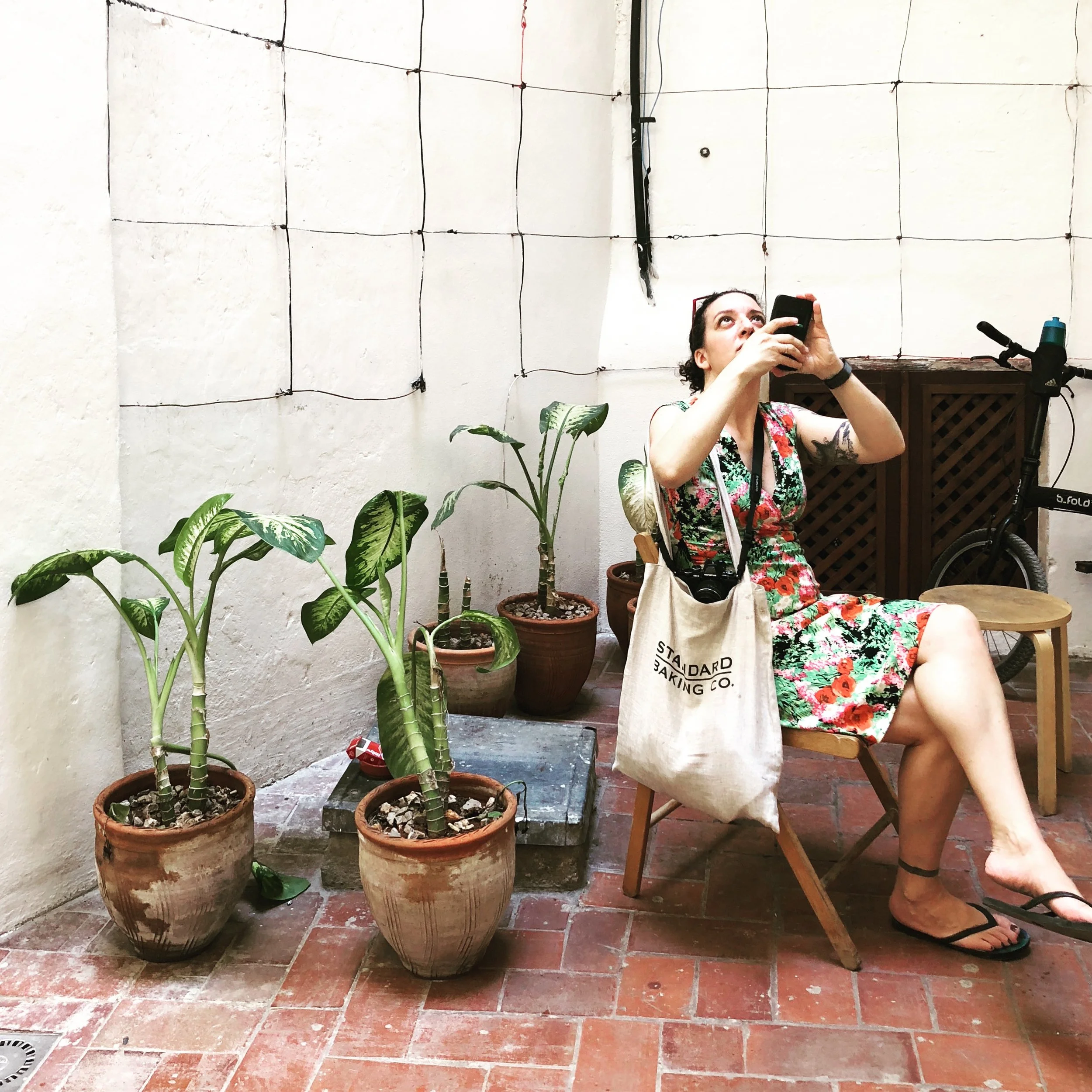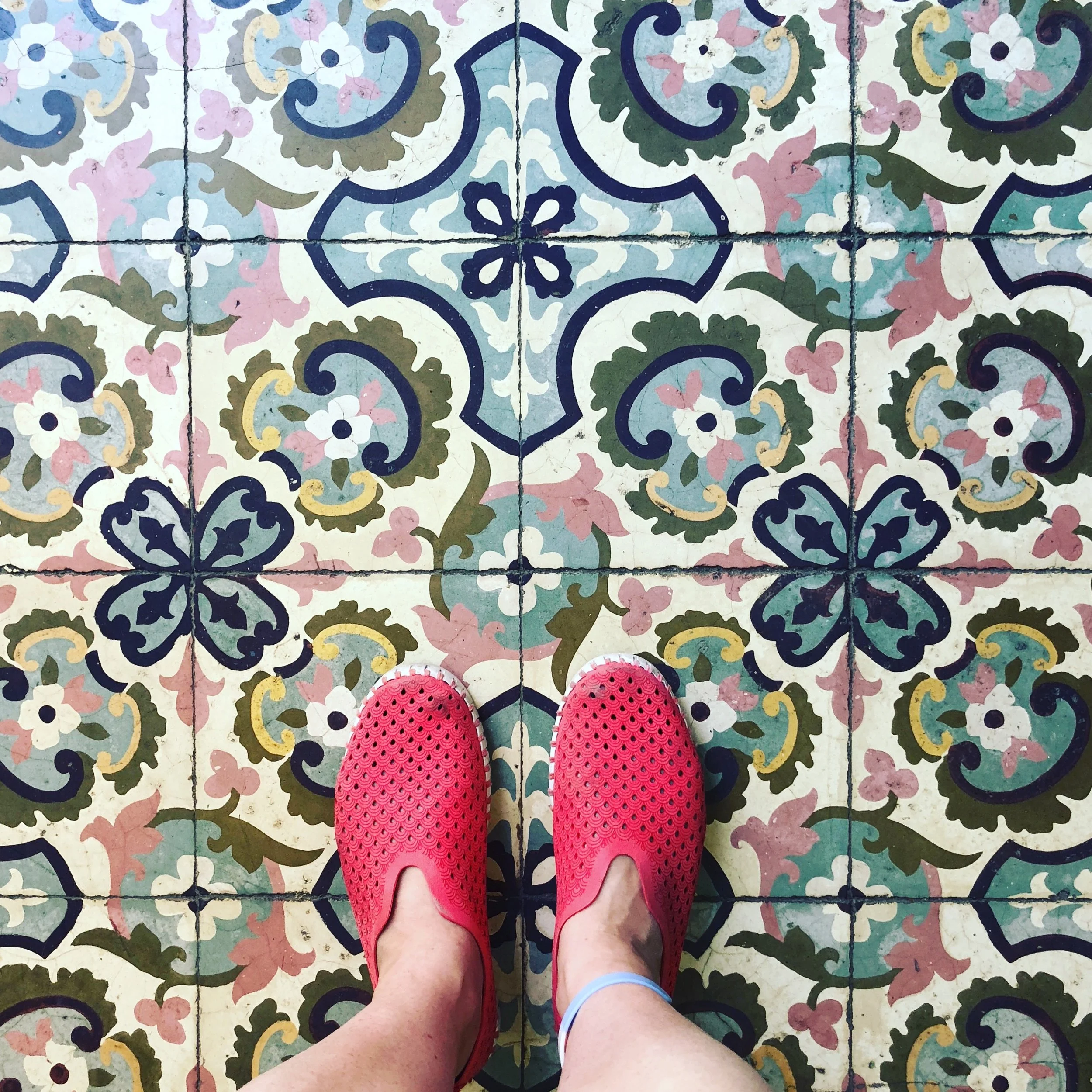From Brooklyn to Havana
When I was growing up in Boston, Massachusetts, traveling with my mother to Cuba to visit her family in Havana felt like stepping back in time. We would tread down a flight of stairs wheeled up to the door of the airplane onto the sweltering tarmac like actors descending from a propeller plane in a 1940s movie. There were no modern jetways into the giant, open, single-story terminal, and air conditioning was absent. My great-uncle, always tanned from the unrelenting sun despite his desk job and with an unfiltered cigarette in his mouth, would pick us up in his 1960s Lada, and we’d go hurtling down the highway toward the city, swerving around potholes and crashing over bumps in the pavement. Most of my relatives were of my grandfather’s generation, their mid-century horn-rimmed glasses, thick polyester dresses and pants, apartments, furniture, tchotchkes, and portraits of Fidel and Che, for reasons of politics and necessity, of another era.
Cuba today is still like a museum in many ways, but the island also has innumerable connections to the outside, modern world, and Cubans are insatiably curious about life abroad. They aren’t shy about approaching foreigners; Cubans will have always heard of the latest foreign music, films, TV programs, and fashions and love to discuss them at length and in detail. During my last trip to Havana in April 2018, several people asked what I thought of season 7 of Game of Thrones (which I myself have never seen).
While it’s opening up some, restrictions have changed with each US president and the legal aspects of traveling to Cuba are difficult to navigate for most Americans. But so many of us are curious about its people and culture, with some 600,000 Americans visiting the island last year. In spite of this, current information about Cuba can be scarce and superficial. Articles in travel magazines and the travel sections of newspaperson how to experience vintage cars, salsa dancing, communism, cigars, mojitos, and rum are easy enough to find, but often missing is depth, meaningful context, why something is important or has endured since the 1959 Revolution. Other sources are limited to Spanish speakers or those with the patience for academic writing.
Since my first visit at 10 months old, I’ve returned to Cuba dozens of times, both alone and with family, and I've been incredibly fortunate to know people there who have given me a glimpse at life away from the tourists. My grandfather, a Cuban artist and writer, hosted a rotating cast of characters from multiple generations of the art and literary scene at the Havana apartment he shared with his sister. Most mornings after eating breakfast with my aunts, I’d walk down to his living room before heading out, and despite the hour (10 a.m.) and the weather (oppressively hot), he’d offer me a glass of rum and introduce me to whoever was paying him a call that day. I’d realize later in life that many of his visitors were the country’s most influential writers and artists. Some were journalists who wrote about music, art, and dance and used their connections to comp me tickets to concerts, gallery openings, and performances.
My great-uncle and his wife, both architects, would pick me up in their boxy, white, Soviet-era car and drive me around the city and suburbs of Havana and Matanzas, pointing out their own work and other important buildings. My eldest great-aunt, eternally entrenched in the family kitchen, showed me how to make breakfast, lunch, and dinner with ingredients from Soviet Russia in the 70s and 80s and with next to nothing during the scarcity of the "special period" of the 90s after the Eastern Bloc fell. “Titi,” she always said, “next time you visit, bring another box of bouillon cubes.”
For several years after college in the early aughts, I organized licensed study-abroad programs and professional exchanges in Cuba for Americans. Accompanying the tours, I was able to experience for the first time the diverse natural beauty that the island offers, from Pinar del Río to Holguín. Later, after I married a Cuban musician, I was introduced to the easternmost part of the island when I went to Santiago de Cuba to meet my in-laws. Its wooden colonial-era houses and majority African-descendant population are closer in appearance and culture to the neighboring islands of Jamaica and Haiti than to Havana.
These days, I live in Brooklyn, not far from where my grandfather settled with his family in the 1940s before returning home in his later years, and I travel to Cuba when I can. I usually take my sons, ages 8 and 4, to spend time with my family as well as their father's in Santiago. I also occasionally go with my mother and aunt to help secure the cultural legacy of their father’s work.
Havana Apt is a foray into the aesthetics of Cuba and its people. There is so much in Cuba’s art, architecture, design, food, music, film, and landscapes to explore. Whether you're planning a trip, remembering time you've spent there, seeking to recreate a little Cuba in your own home, or just admiring the island from afar, I hope Havana Apt will inspire you as much as Cuba inspires me to keep coming back for more.



